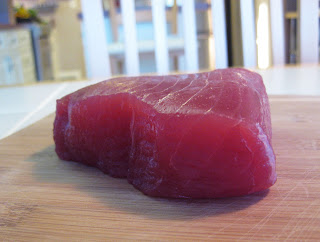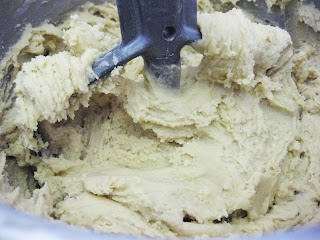I started making homemade marshmallows because my daughter used to be allergic to corn, which was a huge drag because it's in practically everything in one form or another (really, you'd be amazed). I've always felt bad (and sometimes relieved) that her food allergies prevent her from eating all the things the other kids can, so I just wanted her to experience the unique taste and feel of a marshmallow.
Of course making marshmallows is not a totally selfless endeavor. There is the fun factor. I associate marshmallows with good times. Running around my backyard during a cookout, searching for the perfect marshmallow roasting stick. Fixing s'mores around the campfire (okay, you got me, I've never actually done that, but I hear good things). Not to mention all those warm memories of mini marshmallows bobbing around and getting all melty in my hot cocoa. Ahh.
Since I have made plain marshmallows before, I thought it would be fun to experiment with a new flavor. So I combed through my extracts and decided on cinnamon (it was a close call, almond stood a sporting chance). The swirl was added more for decoration than flavor (although it does add a hint of chocolate that goes nicely with the cinnamon).
CINNAMON SWIRL MARSHMALLOWS
Yield: approx. 1 ½ lb.
3 packages unflavored gelatin
½ cup ice cold water
½ cup water
12 oz. sugar (approx. 1 ½ cups)
1 cup Lyle’s Golden Syrup* (or light corn syrup)
1/4 teaspoon kosher salt
1 teaspoon pure cinnamon extract (scant, not heaping)
½ cup confectioners' sugar
½ cup corn starch or potato starch
½ cup bittersweet or semisweet chocolate chips, melted
*can be found in the baking or International (English) aisle of most supermarkets
1. Place the gelatin into the bowl of a stand mixer along with 1/2 cup ice cold water. Have the whisk attachment standing by.
2. In a small saucepan combine 1/2 cup water, sugar, Lyle’s Golden Syrup and salt. Place over medium-high heat and cook until candy thermometer reaches 240º F., about 12-15 minutes. Once the mixture reaches this temperature, immediately remove from the heat.
3. Turn mixer on low speed and, while running, slowly pour the sugar syrup down the side of the bowl into the gelatin mixture. Once you have added all the syrup, increase speed to high. Continue to whip until the mixture becomes very thick and is lukewarm, approx. 12-15 minutes. Add the cinnamon extract during the last minute of whipping. While the mixture is whipping, prepare the pan (see step 4).
4. Combine confectioners' sugar and corn starch in a small bowl. Lightly spray a 13 x 9-inch metal baking pan with nonstick cooking spray (or lightly grease with canola oil). Add some of the sugar/starch mixture and move around to completely coat the bottom and sides of the pan (be liberal, better too much, than not enough). Return any remaining mixture to the bowl for later use.
5. When ready, pour the mixture into the prepared pan, using a lightly oiled spatula for spreading evenly. Working quickly, drizzle the melted chocolate on top and swirl using a skewer.
6. Dust the top with enough of the remaining sugar/starch mixture to lightly cover. Reserve the rest for later. Allow the marshmallows to sit uncovered for at least 4 hours and up to overnight.
7. Turn the marshmallows out onto a cutting board and cut into 1-inch squares using a pizza cutter dusted with the confectioners' sugar mixture. Once cut, lightly dust all sides of each marshmallow with the remaining mixture, using additional if necessary. Store in an airtight container for up to 3 weeks.
To make plain marshmallows: use 1 teaspoon vanilla extract (instead of cinnamon) and omit the chocolate.
adapted from Alton Brown
 |
| If your gelatin looks like this after it soaks up the water, don't worry, it should. |
 |
Lyle's Golden Syrup is a cane sugar syrup with a slightly buttery/caramel
flavor. I chose to use this because my friend Elizabeth tried making
marshmallows with brown rice syrup once and told me it didn't work out
so well (and even though my daughter is no longer allergic to corn,
I'm still not crazy about corn syrup). |
 |
If you immediately discount making a recipe when you see
the phrase "using your candy thermometer...", I urge you
to give it a try some time. It really isn't a big deal. |
 |
| almost there |
 |
| in the pan, drizzled with chocolate |
 |
| swirled |
 |
| extreme swirl closeup |
 |
Next time I might try swirling the melted chocolate directly into the bowl, before it's
in the pan (to see if I can get nice big swirls throughout the entire marshmallow). |





















































